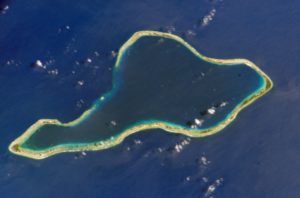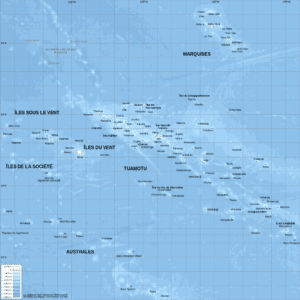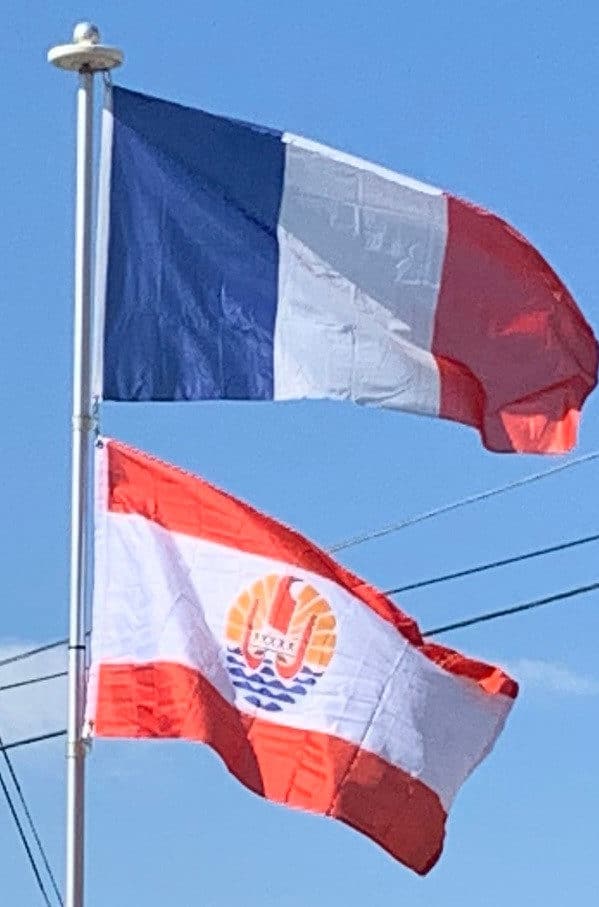In 1946, Polynesians were granted French citizenship and the islands’ status was changed to an overseas territory; the islands’ name was changed in 1957 to Polynésie Française (French Polynesia). In 1962, France’s early nuclear testing ground of Algeria became independent and the Moruroa atoll in the Tuamotu Archipelago was selected as the new testing site; tests were conducted underground after 1974. In 1977, French Polynesia was granted partial internal autonomy; in 1984, the autonomy was extended. French Polynesia became a full overseas collectivity of France in 2003.

In September 1995, France stirred up widespread protests by resuming nuclear testing at Fangataufa atoll after a three-year moratorium. The last test was on 27 January 1996. On 29 January 1996, France announced that it would accede to the Comprehensive Test Ban Treaty, and no longer test nuclear weapons.
French Polynesia was relisted in the UN List of Non-Self Governing Territories in 2013, making it eligible for a UN-backed independence referendum. The relisting was made after the indigenous opposition was voiced and supported by the Polynesian Leaders Group, Pacific Conference of Churches, Women’s International League for Peace and Freedom, Non-Aligned Movement, World Council of Churches, and Melanesian Spearhead Group.
Geography:
The islands of French Polynesia make up a total land area of 3,521 square kilometres (1,359 sq mi), scattered over more than 2,000 kilometres (1,200 mi) of ocean. There are 118 islands in French Polynesia and many more islets or motus around atolls. The highest point is Mount Orohena on Tahiti.

It is made up of six archipelagos. The largest and most populated island is Tahiti, in the Society Islands.
The archipelagos are:
Marquesas Islands – administratively making the Marquesas Islands subdivision (12 high islands and 1 atoll);
Society Islands – administratively subdivided into the Windward Islands subdivision (5 high islands) and the Leeward Islands District (5 atolls);
Tuamotu Archipelago – administratively part of the Tuamotu-Gambier subdivision (80 atolls, grouping over 3,100 islands or islets);
Gambier Islands – administratively part of the Tuamotu-Gambier subdivision (2 atolls in genesis);
Austral Islands – administratively part of the Austral Islands subdivision : (5 atolls);
Bass Islands – administratively part of the Austral Islands subdivision (2 atolls).
Aside from Tahiti, some other important atolls, islands, and island groups in French Polynesia are: Ahē, Bora Bora, Hiva ‘Oa, Huahine, Mai’ao, Maupiti, Meheti’a, Mo’orea, Nuku Hiva, Raiatea, Taha’a, Tetiaroa, Tupua’i and Tūpai.
Economy:
The legal tender of French Polynesia is the CFP Franc which has a fixed exchange rate with the Euro. The nominal gross domestic product (or GDP) of French Polynesia in 2014 was 5.623 billion U.S. dollars at market local prices, the sixth-largest economy in Oceania after Australia, New Zealand, Hawaii, New Caledonia, and Papua New Guinea. The GDP per capita was $20,098 in 2014 (at market exchange rates, not at PPP), lower than in Hawaii, Australia, New Zealand, and New Caledonia, but higher than all the independent insular states of Oceania. Both per capita and total figures were significantly lower than those recorded before the financial crisis of 2007–08.
